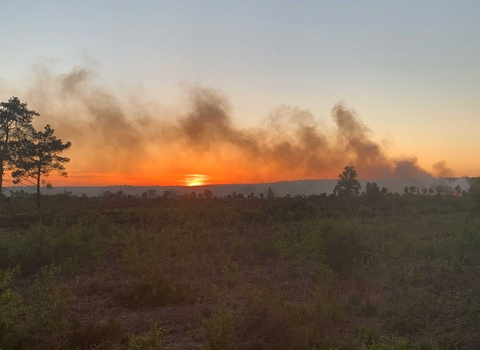How might wildfires be managed in the future?
Climate change is believed to be responsible for the increasing frequency of wildfires. This trend is expected to continue, along with an increase in their severity and extent. The August 2020 fire burned for 10 days on Chobham Common and adjacent land, destroying 30 hectares of habitat on the reserve. Further spread was prevented by the work of a large team of firefighters, aided by the existence of firebreaks, although the fire had already spread across a main road, showing that firebreaks alone cannot always adequately contain wildfire. This large fire, close to housing, led to the precautionary evacuation of over 100 residents for at least 2 days.
The Fire Severity Index (FSI) is a Met Office assessment of the likely severity of a wildfire which breaks out on a specific day. It does not indicate the probability of a fire starting. The FSI takes account of temperature, relative humidity, wind speed and rainfall. On 31 January 2022, a fire started on Chobham Common. Exceptionally dry weather is thought to have aided its initial spread. The south of England had received just 30% of the usual amount of rainfall for the month. However, the FSI was level 2 (moderate) and the fire was successfully extinguished by firefighters after spreading over 4 hectares, with lower daytime temperatures making their task easier than during warmer months. As most wildfires are started by some type of human activity, procedures have been developed to exclude visitors from vulnerable open access countryside land should the FSI reach level 5 (exceptional). You can check the FSI forecast for the next 5 days here: Fsi - Met Office.
Given the frequency of wildfires on Chobham Common, its importance for wildlife, and neighbouring residents’ concerns, it is important to find effective ways to reduce risks as climate change continues. A Forestry Commission wildfire expert has been engaged to create a management plan, in consultation with stakeholders including local residents. This is intended to inform habitat management interventions from October 2022.





